Site Introduction
The site I chose to do my botanical survey in was the Olentangy River Wetland Research Park north of Ohio State’s campus. The area is often just called “the Kidneys” by students familiar with them, because the area has two artificial ponds shaped like kidneys, and the fact that wetlands act like kidneys for the environment!
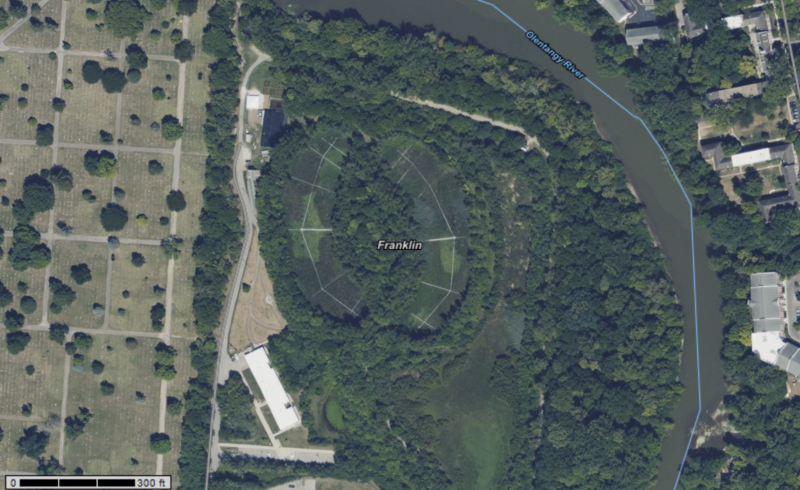
Map of the Olentangy River Wetland Research Park
Next up is some poison ivy I found on the site. It can be nasty if you touch it at all so I’m going to go over some identifying characteristics of the plant! Poison ivy is a vine with leaves grouped in 3’s with reddish petioles. It often carpets the ground so if you see one group, you’ll probably see a lot more nearby. During the winter the vine loses its leaves but can still be identified as a thin, hairy vine climbing up trees.
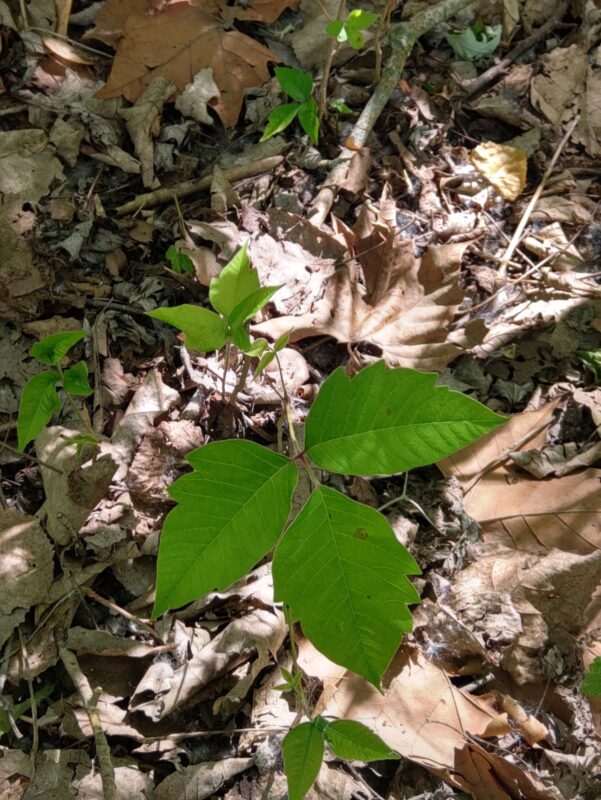
Poison ivy leaves
Flowers and Inflorescences
This next section is about some of the flowering plants I found while out at the site. I’ll be going over the plant’s scientific and common names, a description of the flowers, the type of inflorescences, and what kind of fruit the flowers will become!
White Clover
(Trifolium repens)
White clover is a very common plant in fields and by roadsides. I found this group of white clover just off of the bike path outside the wetlands research building where I parked my bike. The flowers are white, in a dense, round head. They are regular, with 5 petals and a 5-lobed calyx. The flowers have a single carpel and 10 stamens, and the inflorescence type is long stalked with a densely globose head. Because these clovers are in the legume family, the flowers will eventually become legumes!
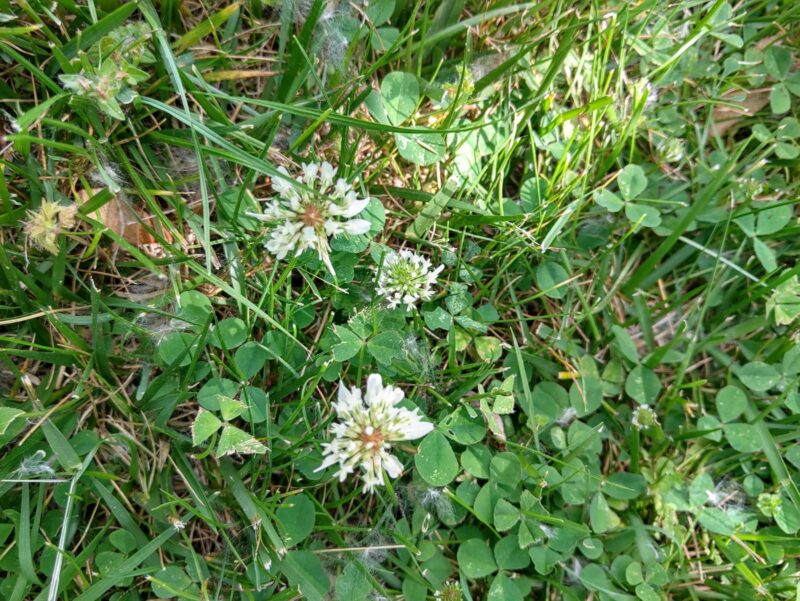
White clover
Rush Aster
(Symphyotrichum boreale)
Rush aster is, of course, in the aster family. I found these flowers off of the bike path on the way to the kidneys! The flowers in this family are very distinctive, and rush aster holds these same characteristics with white ray flowers and yellow disc flowers. They are in the key under flowers with seven or more parts, but it is difficult to say exactly how the disc flowers are built due to their size. The flower head is composed of small tubular disc flowers and narrow ray flowers around the circumference. Asters like this will for achene fruits!
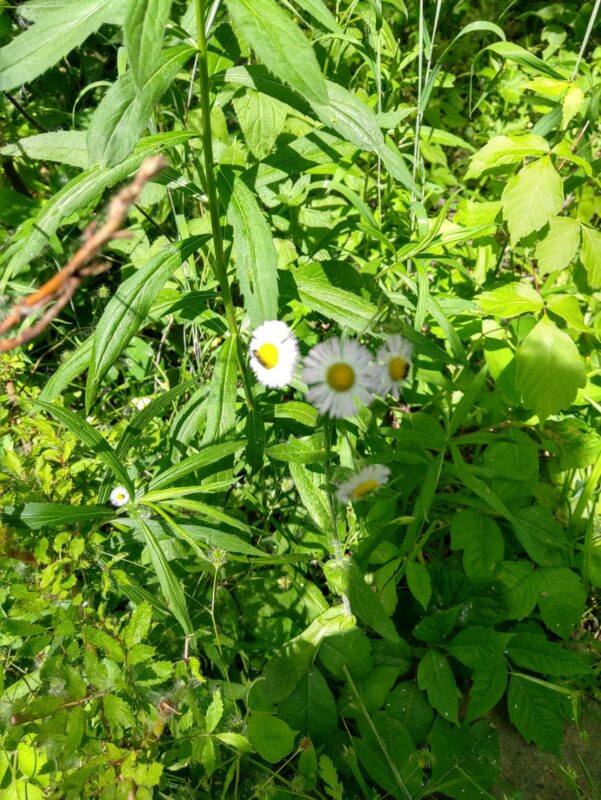
Rush aster
Golden Ragwort
(Packera aurea)
Golden ragwort is another flower in the Asteraceae family! This flower was off of one of the trails leading around the kidneys. It, like rush aster is composed of tubular disc flowers surrounded by flat, thin ray flowers on the circumference. This plant’s ray flowers were fused at the base, however, into pairs. Also like the flowers in the aster family, these flowers will become achenes.
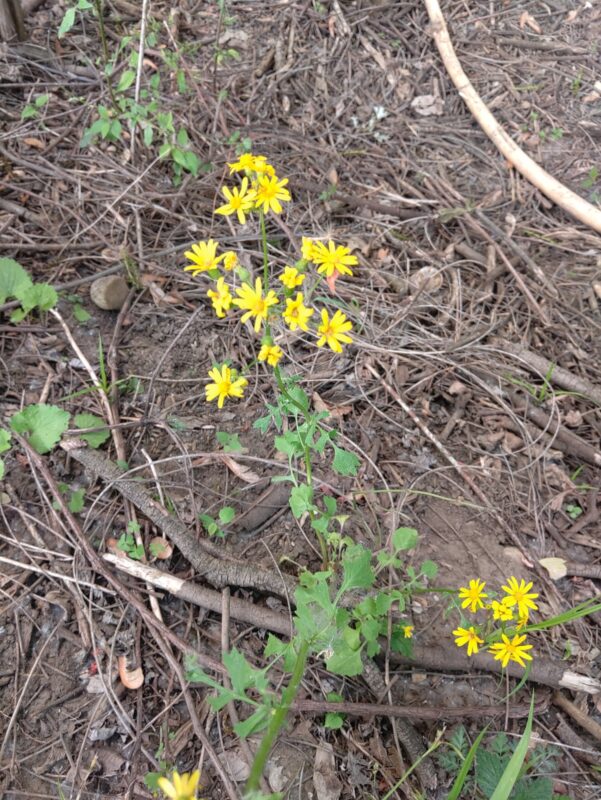
Golden ragwort
Cow Vetch
(Vicia cracca)
The last flowering plant I’ll be talking about is cow vetch. The flowers are bilaterally symmetrical, long and bell-shaped. This inflorescence is a raceme with 10 purple flowers. Vetches are in the Fabaceae family, so much like white clover, this plant’s flowers will become legumes.
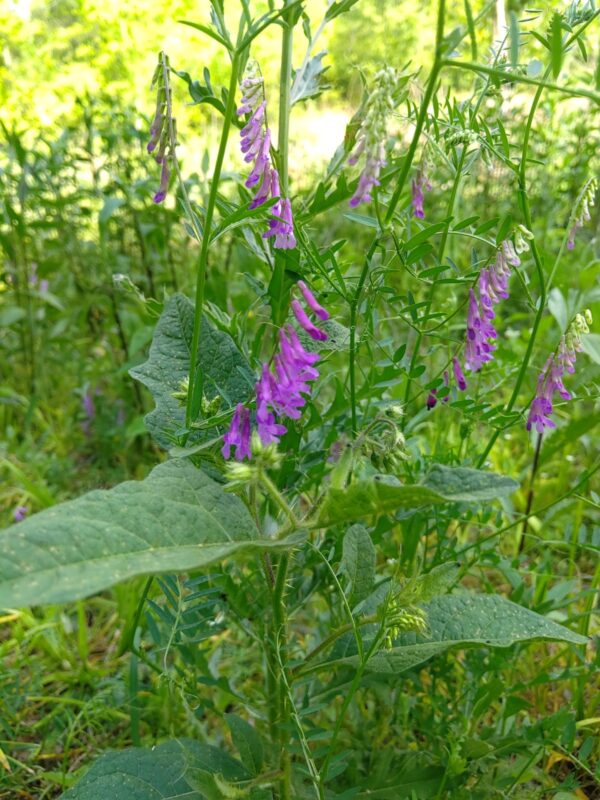
Cow vetch
Invasive Plants
Next up are some plants on the site to boo and hiss at- the invasive species. I’ll go over the 4 species’ origins, why they’re problematic, and tips to help control them.
Multiflora Rose
(Rosa multiflora)
I’ve written a lot about multiflora rose so far, in pretty much every one of my pages mentioning invasive species, but that is unavoidable when it appears at every site I visit. There certainly is a lot of this species at this site. Management strategies have been previously touched on here, but it basically boils down to herbicide application. This plant was originally introduced from East Asia, and widely spread since. It is problematic mainly from the dense monocultures it forms, and overall reduces the potential for native biodiversity.
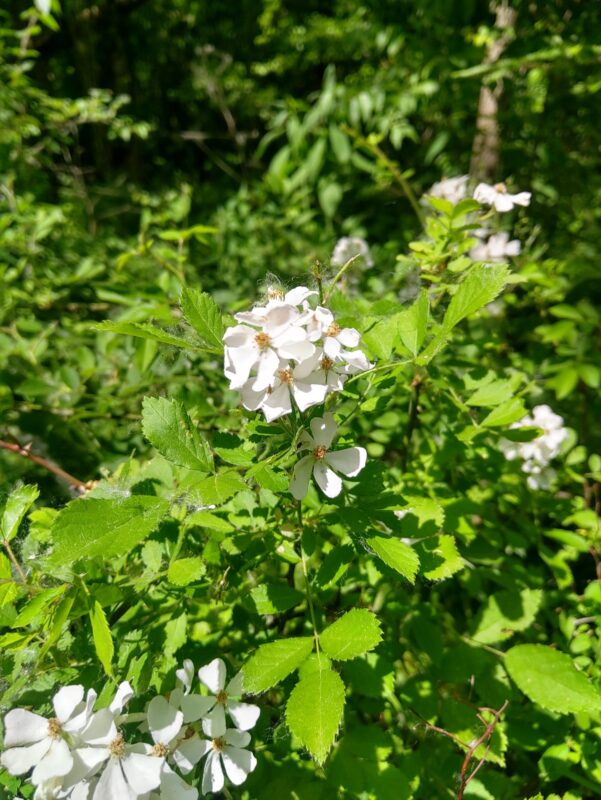
Multiflora rose
Amur Honeysuckle
(Lonicera maackii)
Amur honeysuckle is another plant I’ve discussed before, but it also might be the most prevalent invasive species on the Olentangy River. This plant is also native to East Asia and were planted as ornamentals. As stated on this page, the plant is an ecological trap for cardinals, and does not allow any plants to grow beneath it in the understory. Management strategies include chemical herbicide application, which is the most effective, and mechanical removal, amounting to simply cutting or pulling the individuals out of the area.
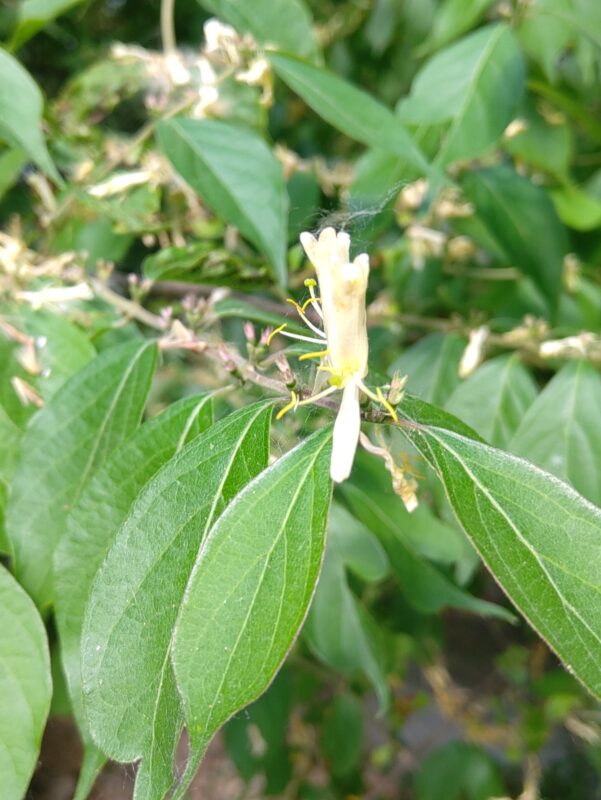
Amur honeysuckle flower
Russian Olive
(Elaeagnus angustifolia)
Russian olive is a species I have not discussed before. Both it and autumn olive are deciduous shrubs found in Ohio that share the same general characteristics. Russian olive is originally from Germany and was planted here as another ornamental species. This species aggressively resprouts, spreads and outcompetes many native shrubs, producing many fruits that are readily eaten and spread by birds. Due to their extensive root systems, and habit of resprouting from root suckers, herbicide application is the most effective method for controlling both autumn and Russian olive.
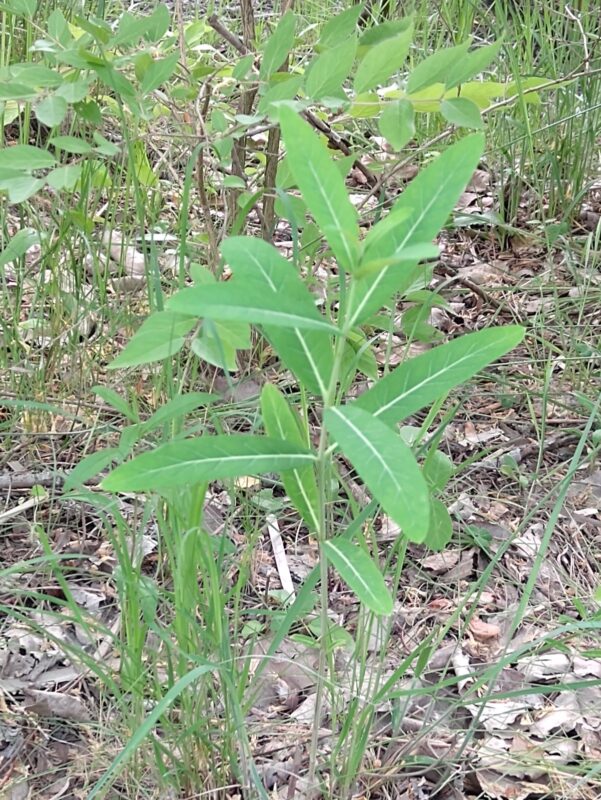
Russian olive
Callery Pear
(Pyrus calleryana)
Back to plant species I have already touched on, Callery pear is a deciduous tree, native to China and Vietnam and also widely planted as an ornamental. As stated here, this tree outcompetes native species, and is just bad as an ornamental due to its fragile branches and rotten smelling flowers. This is another species that resprouts from roots, so mechanical management must be thoroughly removing all roots to prevent this. An easier, and more recommended method is to apply herbicides to this species to kill the entire plant. Although, herbicide application must be carefully considered as Callery pear is in the Rosaceae family and shares a chemical vulnerability with other, preferred Rosaceae members.
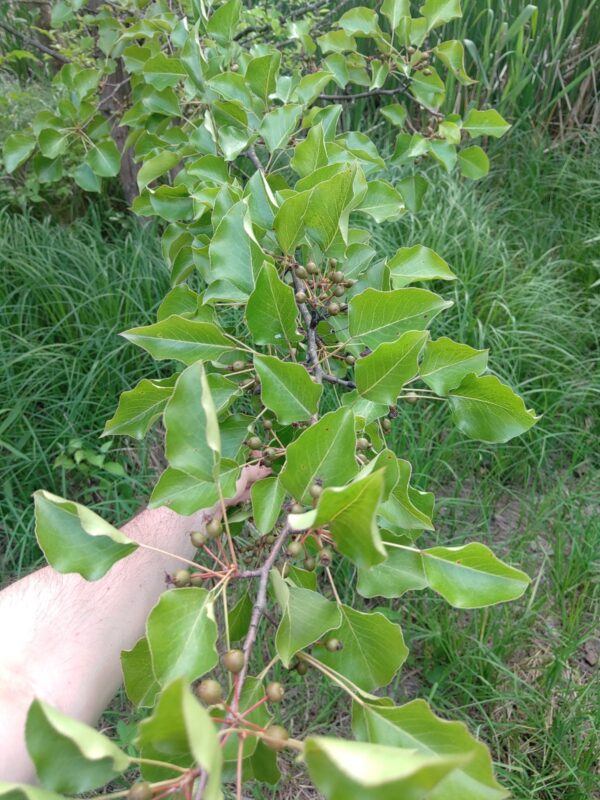
Callery pear
Woody Plants and their Fruit
This section is all about the fruits of woody plants that are on the trees right now! I have four examples of some fruits I found on the site, and I’m going to describe how these fruits can be used to identify trees to genus.
Maples (Acer)
Here we can see one of the more distinctive fruits from woody plants. We can tell this small, winged fruit is a maple because of the flat and rounded wing shape with a terminal seed. This kind of dry, winged fruit is a samara, and can usually be found generally close to their parent trees.
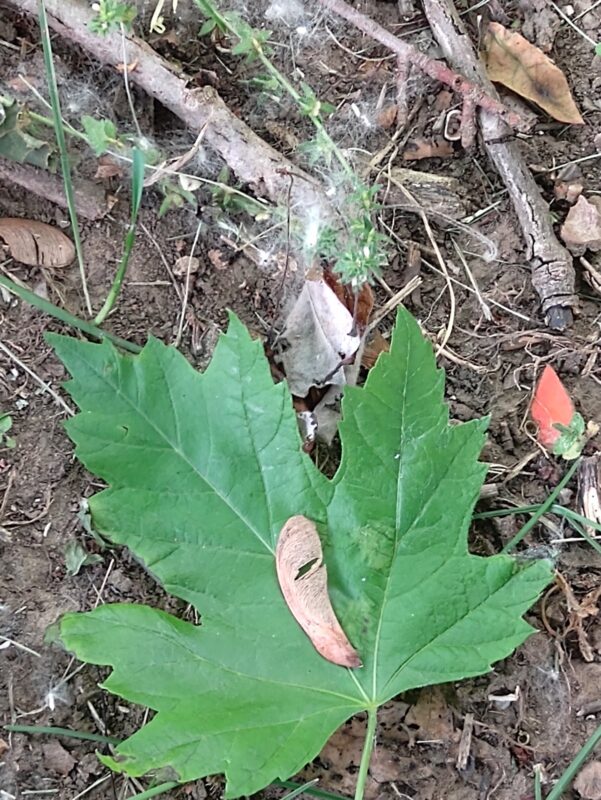
Maple fruit
Hickories (Carya)
Hickories have a very similar fruit to walnuts, which is to be expected as they are both in the same family. Both tree genera produce nuts. Hickory nuts usually have a softer exterior surrounding the nut, but the one I found has already cracked open. Both walnut and hickory nuts ripen between September and November, so this one must be from the previous year. The biggest differences between a walnut and hickory nut are that hickory nuts are smaller on average and have obvious seams that they will eventually split open across.
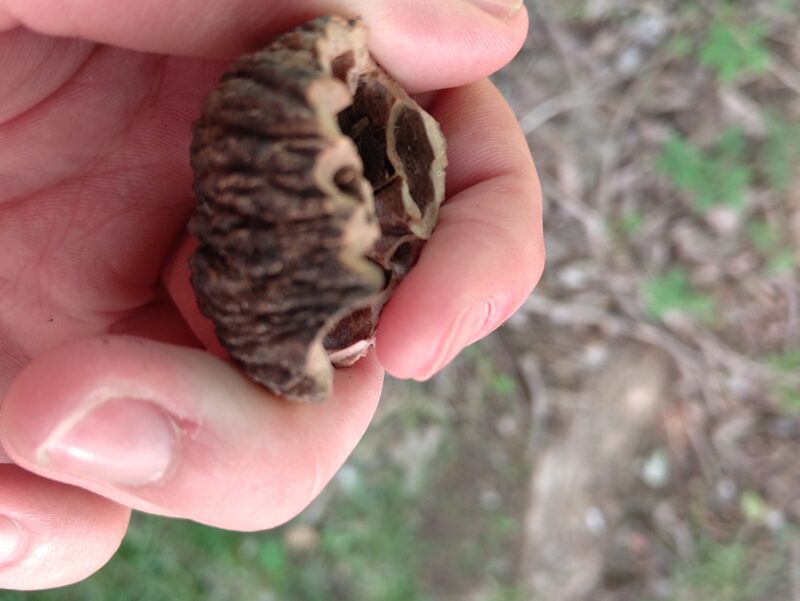
Broken hickory fruit
Walnuts (Juglans)
These walnut fruits are still ripening and will continue to until this fall. When ripe, they will be about the size of your palm and be much rounder and smoother than a hickory nut. This fruit photographed was pretty easy to identify due to it still being on the tree, but the general characteristics of walnuts and hickory nuts should be evident enough to differentiate the two in a side-by-side comparison.
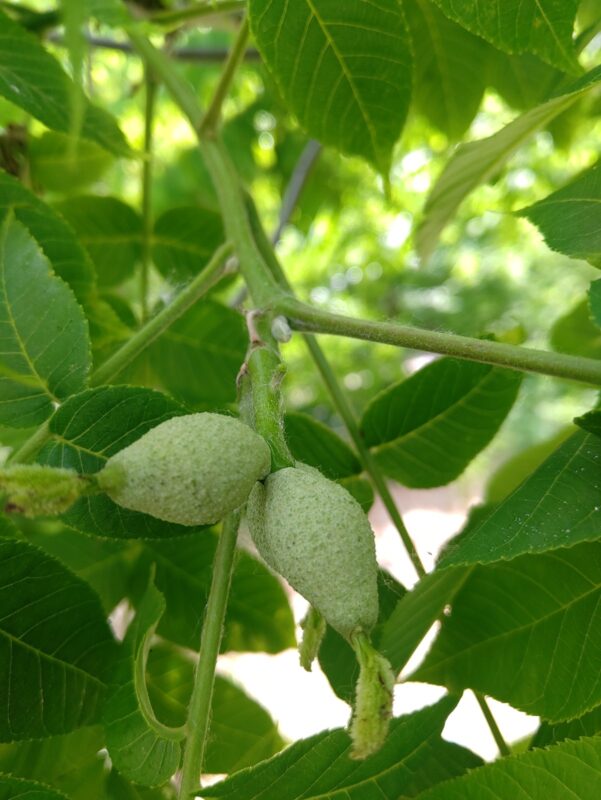
Unripe walnut fruits
Mulberry (Morus)
Mulberry fruits are the only fleshy fruits I found on my site. They appear to be aggregates of drupelets like raspberries and blackberries but are set apart by a couple characteristics. The color of these fruits is white to red and appear to have dark spots on them. Also, in the Northeastern trees key we were given, this is the only genus of tree that has small, oblong fleshy aggregates for fruits.
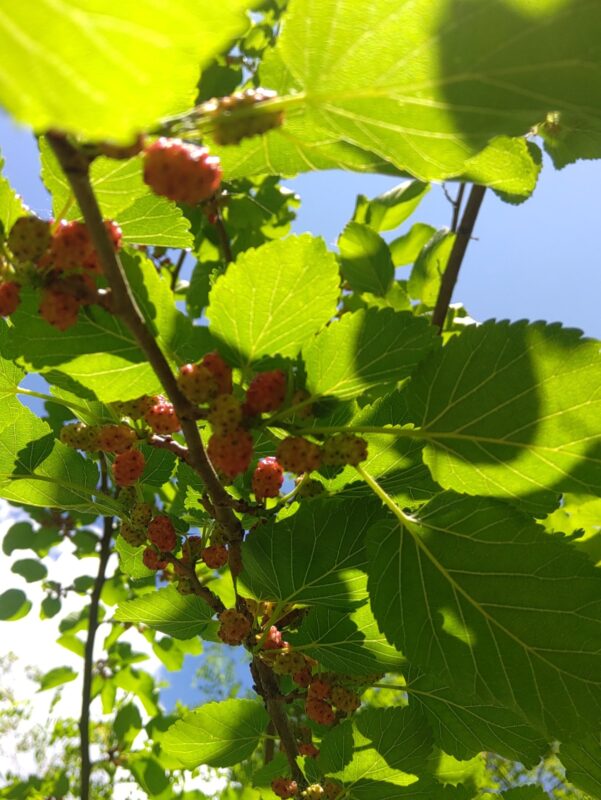
Mulberry fruits
Mosses and Lichens
This final section is for the wonderful mosses and lichens that can be found in the Olentangy River Wetland Research Park! I had found 2 mosses and 2 lichens for this segment, but unfortunately did not remember to photograph the mosses until after I brought them into lab for identification. The two mosses were poodle moss (Anomodon attenuatus) and tree moss (Climacium americanum). The two lichen species were lemon lichen (Candelaria concolor) and hooded sunburst lichen (Xanthomendoza fallax). Each of these species are pictured and labeled below in their respective order.
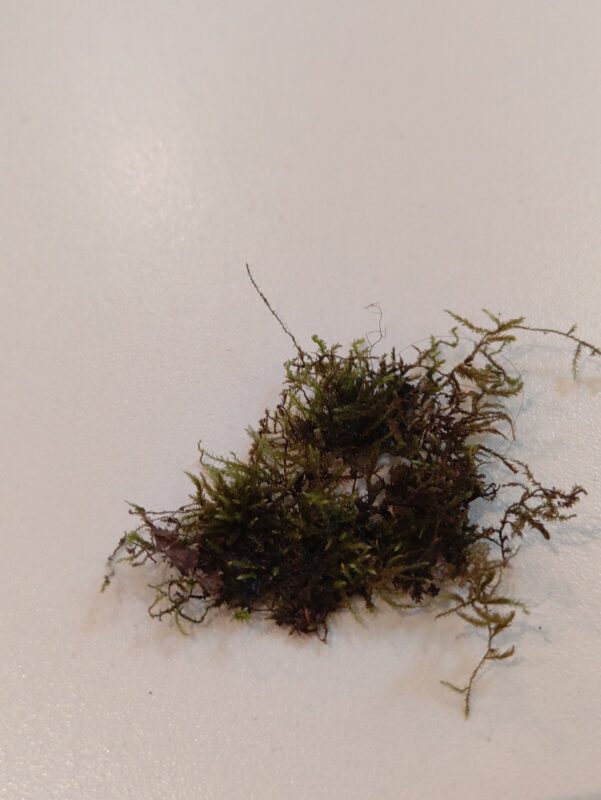
Poodle moss
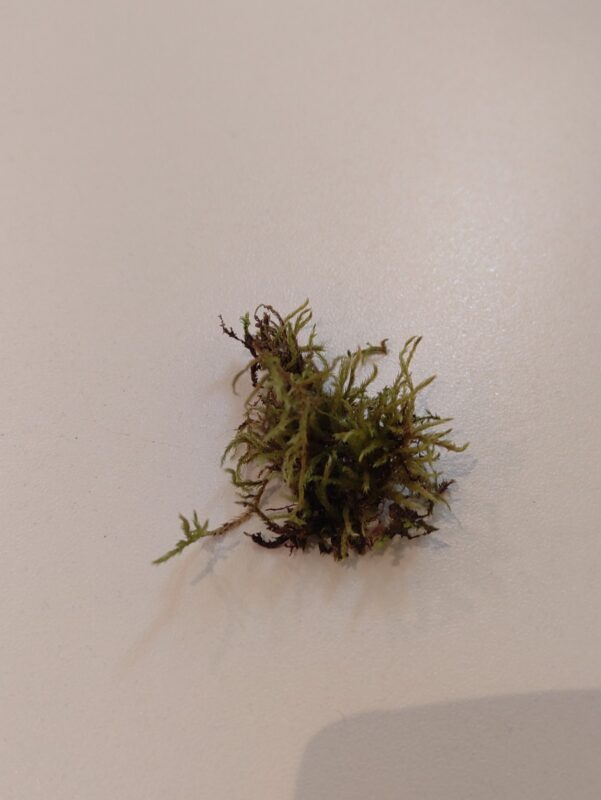
Tree moss
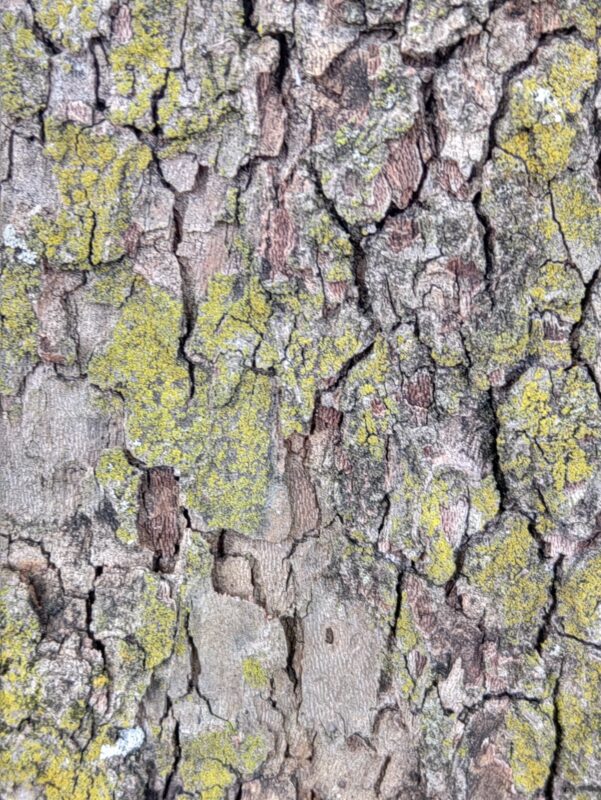
Lemon lichen
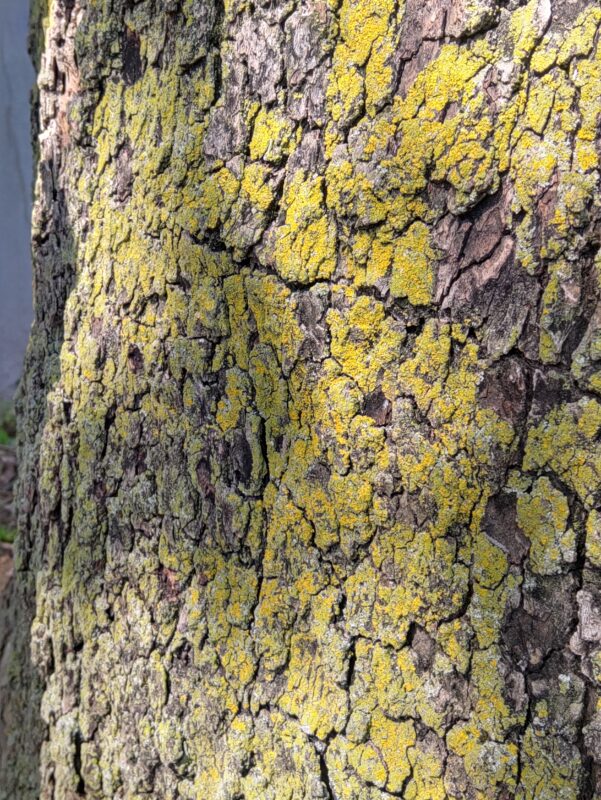
Hooded sunburst lichen
